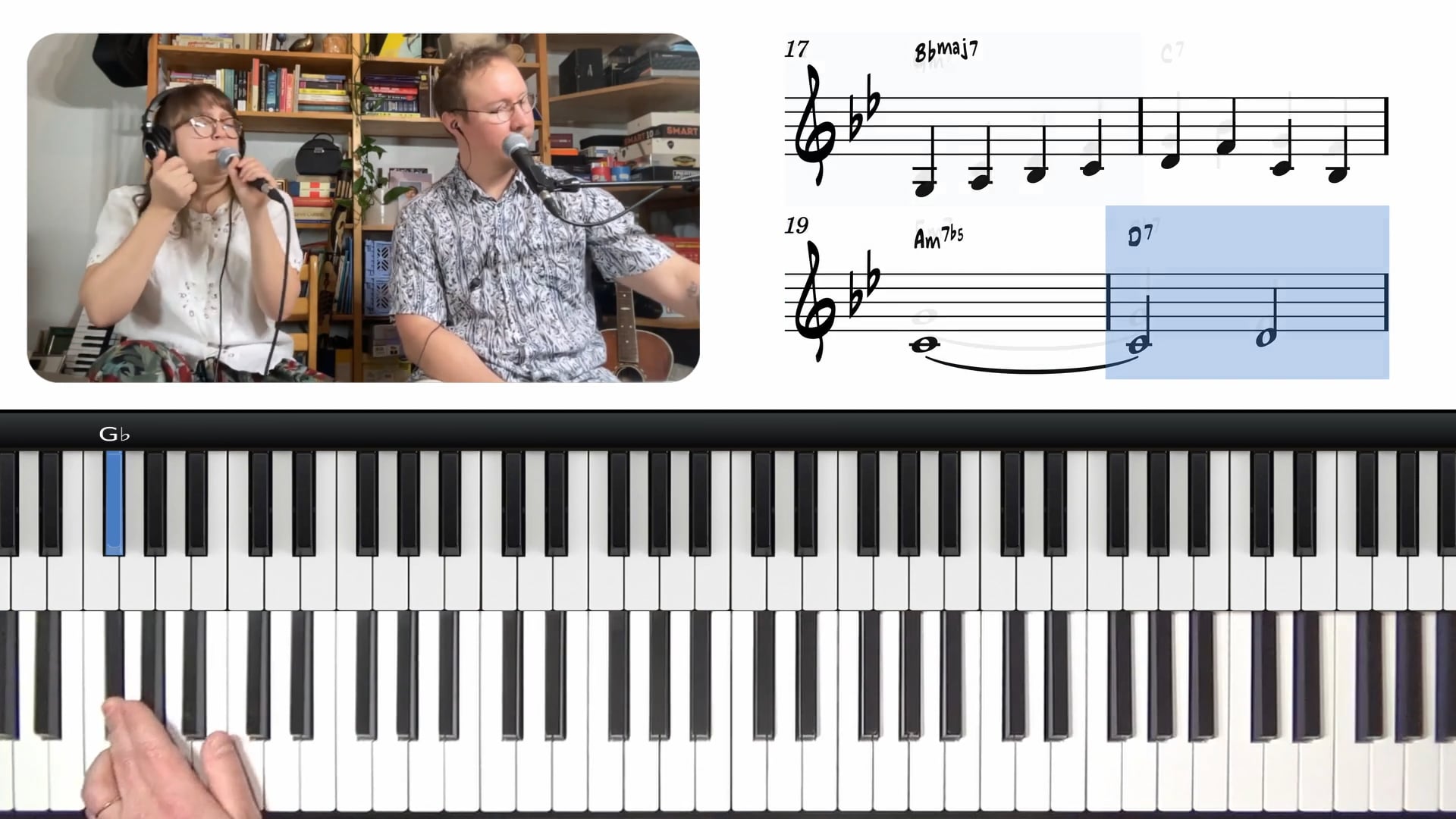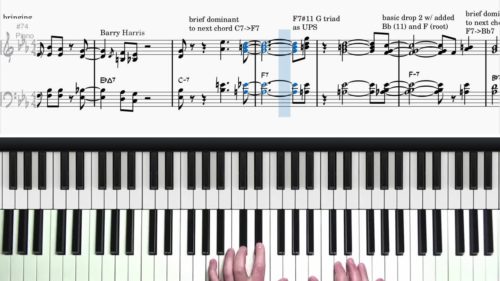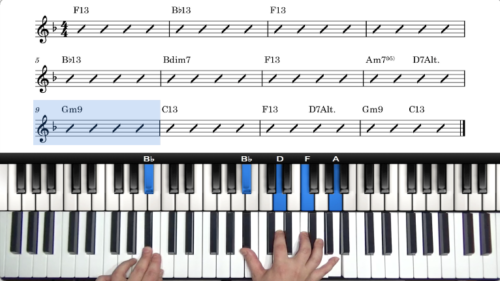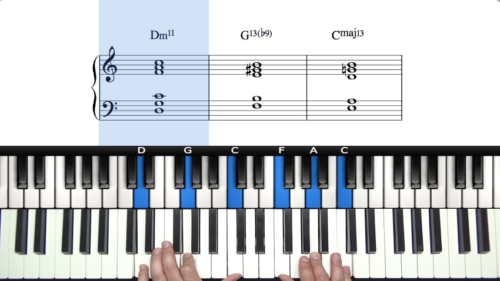Comping Under Vocalists – Rhythm & Groove
Welcome to Part 3 of our vocal accompaniment course, where we explore the rhythmic dimension of comping and its essential role in supporting singers. Building upon the harmonic foundations laid out in the previous lessons, this session focuses on how to develop rhythmic confidence and coordination while accompanying vocalists in a jazz setting.
The tune “There Will Never Be Another You” remains our central example, guiding us through rhythmic techniques that bring life and structure to our accompaniment.
Accompanying Singer – Comping & Rhythm
Rhythm is the heartbeat of music and arguably the most critical element of accompaniment. While rich chords and interesting voicings are important, when playing in-tempo our chord voicings must be placed rhythmically with intention and precision.
This lesson opens by emphasizing how rhythm not only defines musical genres — from bossa nova to R&B to swing — but also shapes the comfort and freedom a vocalist experiences during performance.
We explore how rhythm creates genre identity and how different vocal styles might call for varied rhythmic approaches. For example, in ballads you can relax the rhythm, while in medium swing tunes you’ll want to stay more “on top of the beat.”
Finding The Groove: Starting with Simplicity
As with harmony, we begin our rhythmic studies with simplicity. The first exercise involves playing just the root or root and fifth of each chord, focusing on beats 1 and 3 in a 4/4 meter — a concept often referred to as “playing in two.” This creates a grounded and spacious feel, allowing the vocalist to float over a steady, reliable pulse.
You’ll see how adding just subtle body movement — like snapping on 2 and 4 — helps internalize time and creates unity between pianist and vocalist. This minimalistic setup provides an ideal training ground for developing time awareness and ensemble cohesion.
Vocalist Comping & Rhythmic Patterns
Once the pulse is internalized, we build on the bass notes by adding chordal rhythms. Two specific rhythmic patterns are introduced:
- A simple anticipatory comping figure
- A syncopated variation for more rhythmic interest
Practicing these patterns with a single chord and then applying them to full tunes is a practical way to integrate rhythmic comping into your playing. You’ll hear how combining both rhythmic ideas within a performance creates dynamic variation and avoids repetitive comping.
Accompanying Singers With Walking Bass
Next, we take rhythmic development further by introducing a walking bass. This technique adds motion and energy to the accompaniment and gives vocalists more rhythmic material to respond to.
Although this lesson doesn’t dive deeply into walking bass construction, it outlines the fundamentals: using chord tones like root, 3rd, and 5th, along with chromatic approach notes. We encourage listening to great bass players for stylistic references and studying PianoGroove’s walking bass tutorials for more depth – see the related lessons below for more information.
Singer Interaction – Call & Response
In the final section, we explore rhythmic improvisation and interaction. By creating “space” within the comping, the pianist leaves room for the vocalist to explore phrasing. Moments of call and response between the voice and piano enrich the musical conversation and add storytelling nuance to the performance.
Through a duo improvisation, we demonstrate how rhythmic sensitivity — including when not to play — can make the performance more dynamic, spontaneous, and emotionally connected.
In the next lesson, we’ll build upon this rhythmic foundation by exploring harmonic substitutions — tools that add color, movement, and your own artistic voice to vocal accompaniment.
Practice Tips
-
Play in Two – Begin with bass notes on beats 1 and 3 (root and fifth) to internalize time and support the vocalist clearly and simply.
-
Use Rhythmic Patterns – Practice two foundational comping rhythms and mix them for variation within a tune.
-
Feel the Pulse Physically – Tap your foot or snap on 2 and 4 to keep your rhythm anchored and embodied.
-
Explore Walking Bass – Practice four beats per bar using chord tones and chromatic approaches to drive the harmony forward.
- Leave Space for the Vocalist – Use rhythmic pauses to create room for the singer and experiment with call and response moments for interactive phrasing.








Hello,
Thank you for these very interesting lessons on accompaniment. Personally, I am going to use all this advice to accompany a saxophonist.
You gave two examples of swing patterns. Is it possible to use these patterns also for balads who are not swing but straight ? If not, could you give exemples ?
Thank you in advance and have a nice day.
Best regards,
Véronique